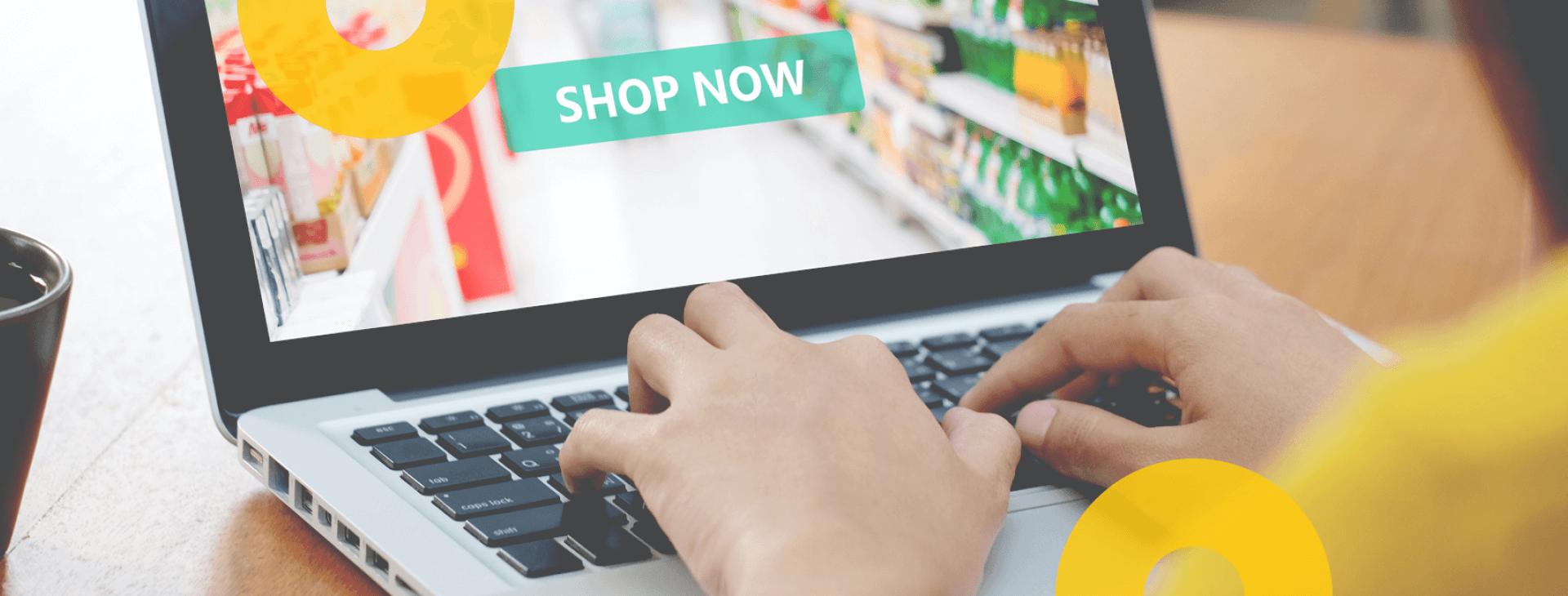Consumer Behaviour and Grocery Ecommerce Business Strategies

Online shopping has opened up a whole new world for consumers. Not only are they more connected to their local stores (by being able to search for their opening hours, etc.), but they are able to source products quickly and easily from across the world.
Although every consumer will have certainly had their own online shopping mishap (whether it be ordering five bunches of bananas or receiving perishables that are already out of date), buying groceries online is increasingly becoming the norm, rather than a differentiator for retailers.
So, in order to keep ahead of the curve when it comes to their grocery eCommerce, retailers need to look more closely at how their customers behave online. From how they build their shopping lists to how they receive their food deliveries, examining the way consumers work and think can help retailers build a better picture, and a better eCommerce system.
How do consumers behave when buying groceries online?
Customers aren’t one dimensional. Even when doing their weekly shop, they are driven by their emotions, intentions and needs. There are also several different decisions that need to be made when buying groceries online, such as which retailer to opt for, how much they’re willing to spend, what they want to buy (for themselves and for others) and what brands they prefer and trust.
Studies have shown that there are two sides to the way consumers behave when making purchases, namely their rational and irrational behaviours. Rational purchases are made to satisfy customers’ needs to complete tasks as effectively as possible. To do this, consumers take cues from their own social groups, consider alternatives and make logical arguments and calculations before deciding on their final purchase.
Irrational purchases are driven mainly by customers’ emotions and impulses, but can be restricted by factors such as the risk of purchasing from an unknown source, limited time, and reduced information or guidance from others.
When it comes to regular purchases of goods that a customer uses frequently (like groceries), it’s been shown that consumers are more likely to purchase irrationally. Many surveyed consumers have admitted in studies that their food buying decisions are often impulsive, emotional, and reckless.
This is knowledge that retailers have used in-store to encourage further purchasing, such as special offers and discounts at till points. Transferring these tools effectively onto an eCommerce platform will help to give retailers the edge when it comes to purchasing.
What does the future of grocery eCommerce look like?
Even before the COVID-19 epidemic led more consumers to do their weekly shop online, grocery eCommerce was changing. According to reports by Gartner, not only are eCommerce platforms moving from being differentiators in the market to standard offerings from retailers, but they are becoming much more than points of purchase too.
By 2025, Gartner believes the eCommerce platforms for the top-performing retailers will have the ability to adjust pricing in real-time for customers. They’ll also be harnessing information from digital twins to help optimise operations and creating blockchains that will offer customers visibility over food production, quality and freshness before they buy.
So to stay ahead of the market, it’s no longer a case of adapting your eCommerce platform to meet customers’ needs and behaviours, but also using it to enhance businesses’ wider performance and productivity. As the effects of the coronavirus pandemic have shown, the ability to adapt to moving trends and implement change quickly is crucial to retailers’ success in the market. By taking this learning and thinking about the bigger picture of eCommerce platforms, retailers can really start to reap the benefits of an effective, efficient system.
How can retailers adapt to this changing landscape?
As we’ve established, consumer behaviours and needs have pushed grocery eCommerce platforms forward faster than many retailers could have predicted. Understanding what drives customers to buy, what they want from their shopping experiences and being able to adapt to these needs quickly is essential to staying competitive in the marketplace.
Keeping these factors in mind, there are some major learnings that retailers need to consider when reviewing their eCommerce platform to make sure it’s really driving their business forward and providing an effective return on investment.
E-commerce is no longer a point of difference
Especially since the COVID-19 pandemic, new customer behaviours have meant that having an effective eCommerce platform is now a standard expectation for any successful retailer. In order to be as effective as possible, however, retailers need to take what they’ve learned from the way their customers shop in their stores and transfer this to their online platforms.
By thinking about their operations as a whole service, with online sales being supported or even fulfilled by stores, retailers can grow their overall sales and build an all-round better experience for their customers. It’s also important that this experience is extended beyond the website platform into a strong digital presence such as mobile, social and even apps, so that the online world becomes an enticing ‘front door’ to a retail experience.
Data can help you stay a step ahead
Any product a customer wants is now simply a click or a voice command away. To captivate customers and capture sales, retailers need to have a thorough understanding of how they buy. To do this, they need data.
As well as capturing insightful and useful data and information about their customers, eCommerce platforms also need to translate these into meaningful and sometimes even personalised experiences.
For example, by assessing competitors’ prices and customers’ personal data and product preferences, retailers can translate the information into immediate, contextualised offers that are presented to customers as ads. These personalised offers make it easier for the customer to purchase, fulfil their irrational purchasing behaviours and build their trust and loyalty to a retailer’s brand.
Retailers can also build customers’ trust by using tools such as supply chain monitoring to give buyers visibility on where their food is coming from. This has become more significant as consumers have become more aware of produce traceability, freshness and quality. Some retailers are already running pilots and trials on food traceability using blockchain and are leading the retail industry in this area, showing how increasing understanding through data can help to reinforce their commitment to customer needs.
Good platforms can benefit your business too
Having an even deeper understanding of customer behaviours has the power to do more than provide effective ads to customers, especially as the path to purchase becomes more erratic across multiple touchpoints. Tools such as digital twins, which are increasingly being used in many industries such as healthcare and manufacturing, can now offer retailers in-depth data on people’s behaviour as well as their preferences.
Adapting eCommerce platforms to collect more data on customer behaviour means that retailers can use this data to build models and forecast outcomes and wider trends for their business. This information can enable retailers to start adapting their operations and processes to better suit customers’ needs ahead of time. By doing so, retailers can be proactive in serving customers, improve their store experience and optimise their operations with confidence.



